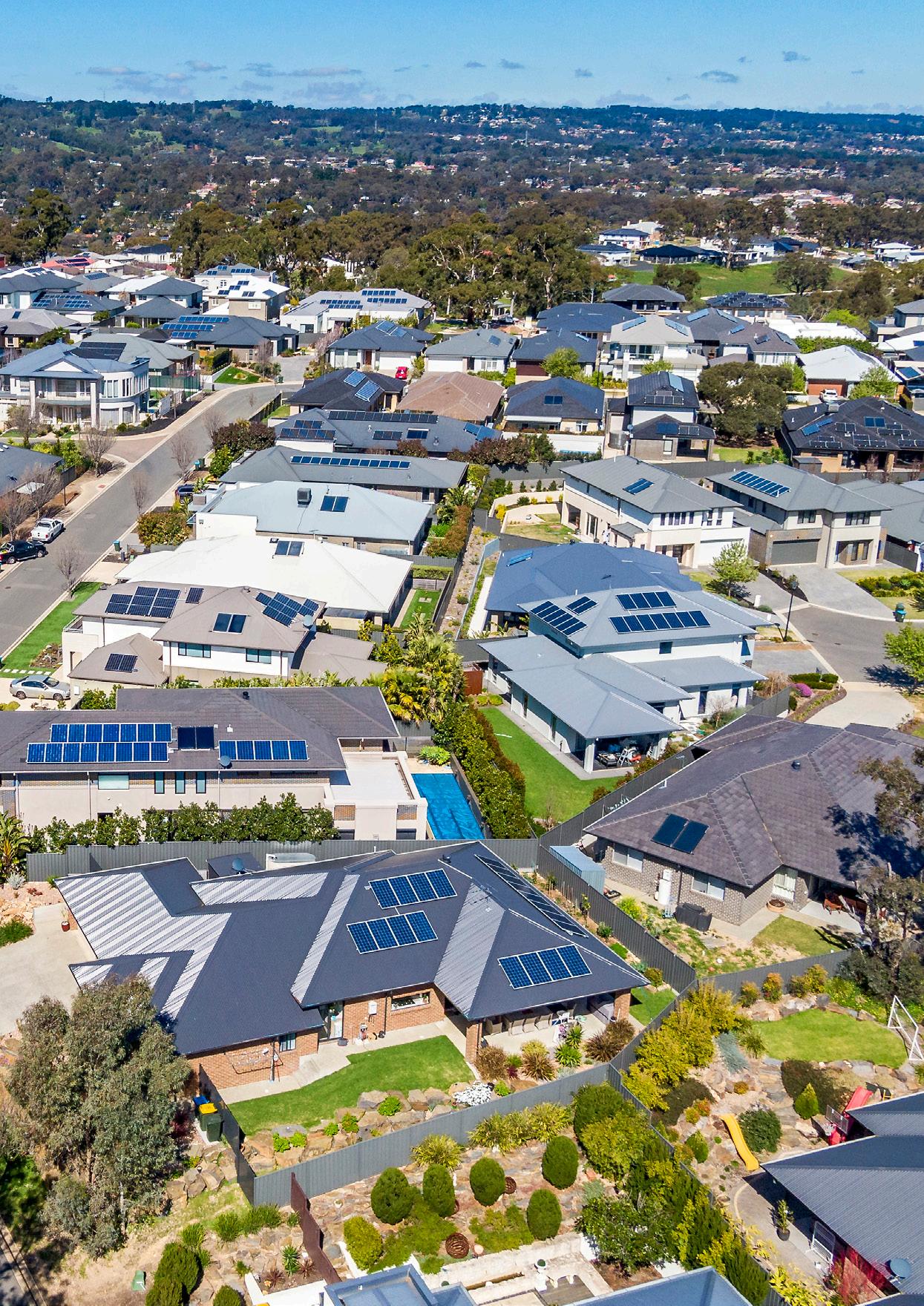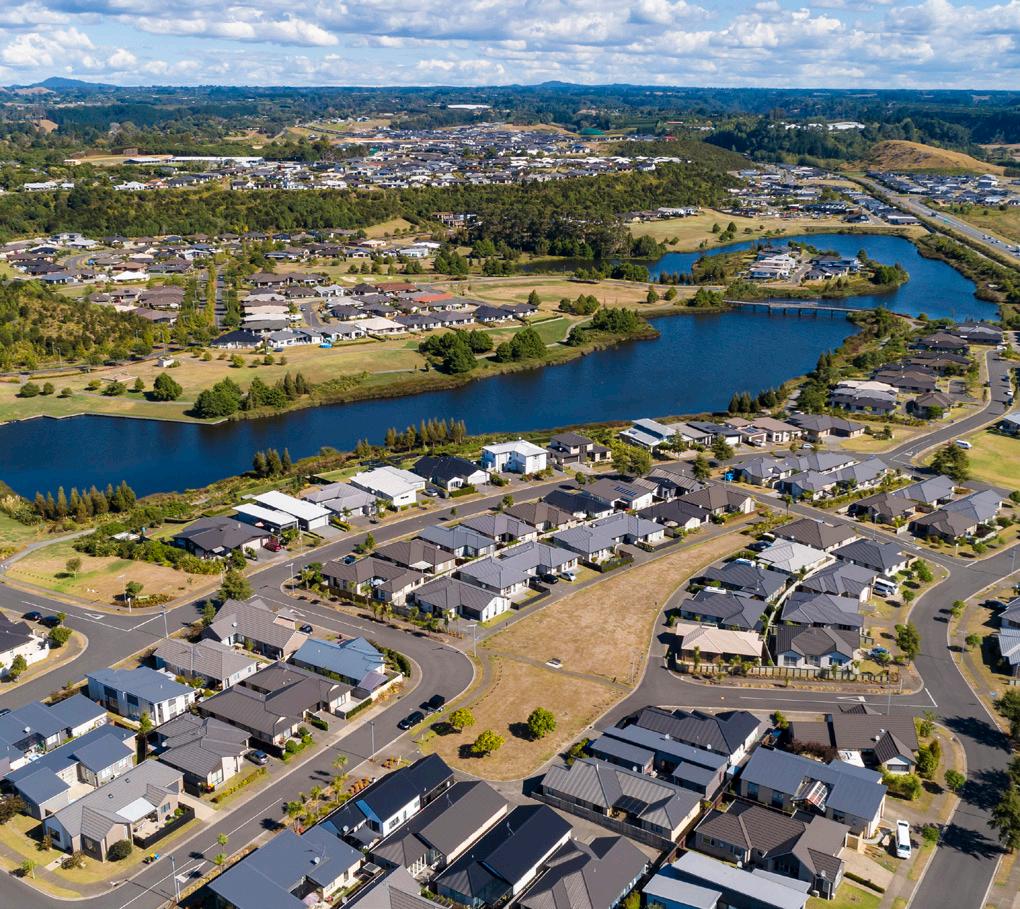
10 minute read
Working From Home and Housing Choices
FEATURE ARTICLE
Working From Home and Housing Choices
How Working From Home Is Changing Housing Choices
The rise in working from home is playing a key role in the housing choices of Australians and is one of the major emerging trends affecting the residential property market.
How working from home will ultimately change the property market in the long run is a key question facing the industry.
However, governments and policy makers are also taking notice, not least because of what working from home means for our cities and regions and economic prosperity overall.
For example, the Reserve Bank of Australia (RBA) recently told a parliamentary inquiry into housing affordability and supply that the ability to work from home, combined with lockdowns and record-low interest rates, might have increased the attractiveness of regional areas and shifted demand towards lower density dwellings (such as houses).
The ‘New Normal’
We are, potentially, only at the beginning of a period of major change given the transition to a ‘new normal’ has been hindered by extended lockdowns and other restrictions.
Given the already significant adoption of working from home we could well see many buyers vote with their feet once freed of mobility restrictions and harsh lockdowns.
This could result in further substantial changes to Australia’s property market.
Although much of the evidence and research for such as view is preliminary it is, arguably, compelling.
The Productivity Commission’s recent Working from Home report (September 2021) concludes, for example, that the ongoing shift to working from home is one of the most significant changes to how Australians have worked in the last half century. As the Chair of the Productivity Commission, Michael Brennan, noted “in less than two years we have gone from less than 8 per cent of Australians working from home to 40 per cent. While this percentage may not always remain so high it is inevitable that more Australians will work from home.”
Similarly, a University of Sydney Business School survey suggests that 75% of workers consider their employers will support future work from home plans and that many wish to work from home an average of two days per week.
Working from Home – A Global Phenomenon
Working from home is now global and continues to increase.
Experts from around the world are grappling to understand the scale of this trend and its impact.
In the United States, for example, Stanford economist Nicholas Bloom suggests around 22% of all full workdays will be done from home in the future (up from just 5% before).
The McKinsey Global Institute suggests that over 20% of the workforce could work remotely three to five days a week.
Research from the World Bank suggests one in every five jobs could be done from home.
An Organisation for Economic Co-operation and Development (OECD) study finds that, although the opportunity for remote working varies greatly between and within nations, between 40% and 50% of jobs could potentially be done from home in some countries.
Looking Forward
Many factors – including business strategies, government policy, demographics and the technology – will shape the working from home phenomenon and its impact on the economy, property market and many other aspects of our economic and social lives.
It appears, however, that working from home is here to stay.
While it is very difficult to fully ascertain the scale and impact of this major trend in the future it is important that we remain focussed on trying to understand it. At Oliver Hume we continue to track this and many other trends to better understand the property market of the future.
Through our proprietary market intelligence and inhouse experts, we endeavour to understand not just where market currently is, but where it is heading and how opportunities can be maximised.
FEATURE ARTICLE
Australia’s Landmark Submarine Deal and the South Australian Property Market
Australia’s landmark deal with the United States and Britain to acquire at least eight nuclear-powered submarines is tremendously significant for Adelaide and South Australia.
The deal is part of a broader trilateral security partnership dubbed “AUKUS” - Australia, the United Kingdom, and the United States.
Construction of the first submarines is due to commence in Adelaide this decade and will herald a new era of employment growth, manufacturing, innovation and economic development for South Australia.
Adelaide’s economy and the local property market will be key beneficiaries of the new strategic AUKUS partnership - and the new hi-tech submarine manufacturing specifically - further strengthening South Australia’s status as the nation’s ‘defence state.’
The recent announcement comes at a time when Adelaide is welcoming back many South Australians – due to a range of factors including COVID-19 and the city’s relative housing affordability - and is increasingly recognised globally for its lifestyle and other competitive advantages.
For example, Adelaide was recently ranked the world’s third most liveable city and the most liveable city in Australia.
The employment and other economic impacts of the new submarines and associated naval manufacturing will be significant.
Around 5,000 workers could be employed in South Australia’s naval shipbuilding industry over the next decade.
This includes many highly proficient and skilled professionals such as naval engineers, shipbuilders and designers.
The skill and knowledge of these workers will be worldclass given the sophistication and technology required to build advanced nuclear-powered submarines which are amongst the most complex machines ever made. In addition to the new submarines around $6.4 billion, supporting 1,300 jobs, will be invested for the Life-ofType Extension and Full-Cycle Docking to the existing Collins class submarine fleet at South Australia’s Osborne Naval Shipyard.
This process is the complete replacement of key systems, essentially rebuilding each submarine, and will extend the service life of the fleet.
The process will ensure Australia’s submarine capability is preserved until the new submarines are ready for service.
South Australia’s status as the nation’s shipbuilding capital is furthered by an additional $5.1 billion in upgrades to the Hobart Class destroyers at Osborne. This investment is expected to create another 300 jobs in the state.
The new AUKUS partnership will extend beyond the new submarines and will include significant technology and knowledge sharing between the three nations.
This includes greater integration of many highly advanced security and defence-related science and technologies such as artificial intelligence, cyber, quantum technologies and other undersea capabilities.
Greater integration across industrial capability and supply chains fields is also planned.


FEATURE ARTICLE
Demand For Detached Housing Proves Strong As Pandemic Changes Designs
One of the questions heading into 2021 was what the end of HomeBuilder incentive would mean for the market.
Various alternative scenarios were being discussed.
Would demand moderate due to the end of the incentive? Or would demand continue to increase, buoyed by a rebounding economy and greater confidence?
As we approach the end of 2021, the verdict is in.
Although record low interest rates, higher household savings and other factors have played a major role throughout 2021, the second year of COVID-19 has showed that Australia’s appetite for residential property remains strong.
Demand for detached housing, especially, is robust.
The latest Housing Industry Association figures show national new home sales rose 5.8% in August from the previous month.
Moreover, sales in recent months across the nation have continued to remain strong.
This is especially the case when compared to the period before COVID-19.
For example, sales over the past three months have been stronger than the same periods in both 2019 and 2018 (15.4% and 4.5% higher).
Similarly, Oliver Hume data shows new enquires for residential land in Victoria increased by 7% in August and 15% in July (from the previous month).
Stronger demand for detached homes suggests that, for at least some market segments, we could be in the early phase of a structural shift towards lower density dwellings such as detached house and townhouses.
Detached housing is clearly ticking boxes for many buyers because of this product’s capacity to deliver more space to live, work and play – space which has been increasingly sought after over the last year and a half as millions have been subject to lockdowns and other restrictions. Importantly, in addition to the quest for more space, many design and other features of homes being sought by buyers are changing.
It appears that COVID-19 has resulted in some buyers viewing their homes differently, due to the markedly different economic and health environment, and preferences are also changing.
Although this might appear novel, a quick glance into history suggests this is not a new phenomenon.
Pandemics, infections and related events have long been catalysts for changes in the built environment, architecture and design.
For example, an outbreak of cholera in London led to carpets and drapes in bathrooms being replaced with surfaces that were easier to clean. Today, modern bathrooms now prioritise tiles or marble, creating smooth services which can be cleaned and disinfected.
Similarly, powder rooms or bathrooms for guests are a common feature in modern house designs. However, the origin of this practice dates to the 1918 flu pandemic. Having a small bathroom in the main area meant guests weren’t required to walk through the entire dwelling to wash.

So how are designs changing in the era of COVID-19?
House designs continue to evolve and it is likely that the impact of COVID-19 will continue to be felt for years.
However, even though we are only beginning to see many aspects of house design change, it is clear change is underway.
To date, some of the most distinctive design changes include:
• Home offices: The rise in working from home means a dedicated space for a home office is increasingly highly sought after • Antimicrobial materials: The priority on health and safety could lead many people to choose easy-toclean materials and surfaces that are antimicrobial
• Outdoor space emphasis: Integrating outdoor living into new homes are leading to more features like sprawling backyards, balconies and porches where people can play, cook, eat and exercise • Multi-purpose spaces: More families spending more time at home is creating a need for spaces that can function for different purposes including as recreational space, gym, study or storage • Open space: People are sending more time at home. Seeking peace and comfort at home and larger living spaces can help them make the most of their leisure time.
Of course, the degree to which these changes in home design are permanent or transitory remains to be seen.
However, the growing recognition that a similar event could occur again in the future, suggests design changes will continue to flow through from the imaginations of architects and designers to the estates and suburbs of our cities and regions.

www.oliverhume.com.au

NATIONAL HEAD OFFICE
Level 2 4 Riverside Quay Southbank, VIC 3006
+613 9669 5999
DARWIN OFFICE
129 Asche Street Muirhead NT 0810
1 300 7373 598 BRISBANE OFFICE
Shop 9, Gasworks Precinct 26 Reddacliff Street Newstead, QLD 4006
+617 3216 1666
GOLD COAST OFFICE
Suite 19C, Level 19 50 Cavill Avenue Surfers Paradise, QLD 4217
+617 5564 3200
Important: The information in this document has been prepared a general guide only and does not constitute advice. We have relied upon information from sources generally regarded as authoritative. Whilst the information has been prepared in good faith and with due care, no representation is made in relation to the accuracy of the whole or any part of the publication. No liability for negligence or otherwise is assumed for any loss or damage suffered by any party resulting from their use of this publication. The whole or any part of this publication must not be mirrored, reproduced or copied, without written consent. The document may contain future forecasts of a range of variables, which can be affected by a significant number of unpredictable factors, including social and economic conditions. It only represents the best judgements and estimates, made by Oliver Hume Research. No assurances can be given that the forecasts will be achieved. This document should be read in conjunction with any other documentation prepared by the marketing agent and associated consultants.




